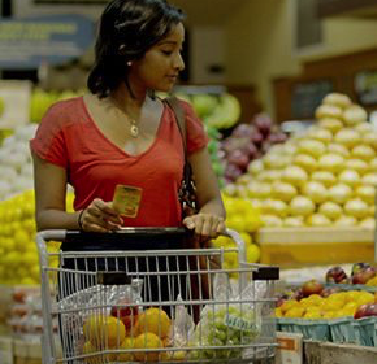An overwhelming majority of food samples tested by the USDA contain traces of pesticides that you don’t want in your body! There are thousands of fruits and vegetables that you should avoid if they are not organically grown. And note that it really doesn’t help to wash, scrub and peel contaminated produce since the pesticide residues are on the “inside” as well!
Read further to learn about the Top 12 non-organic fruits and vegetables to avoid when you go shopping …
It’s no wonder that the popularity of organic food in the US has grown significantly in recent years. Based on the USDA findings, these are the dozen non-organic fruits and vegetables that the Environmental Working Group (EWG) has found to be contaminated most often with pesticide residues that you do not want to consume:
Highlights of Dirty Dozen™ 2015
EWG singles out produce with the highest pesticide loads for its Dirty Dozen™ list. This year, it is comprised of apples, peaches, nectarines, strawberries, grapes, celery, spinach, sweet bell peppers, cucumbers, cherry tomatoes, imported snap peas and potatoes.
Each of these foods tested positive a number of different pesticide residues and showed higher concentrations of pesticides than other produce items.
Key findings:
- 99 percent of apple samples, 98 percent of peaches, and 97 percent of nectarines tested positive for at least one pesticide residue.
- The average potato had more pesticides by weight than any other produce.
- A single grape sample and a sweet bell pepper sample contained 15 pesticides.
- Single samples of cherry tomatoes, nectarines, peaches, imported snap peas and strawberries showed 13 different pesticides apiece.
It’s also good to know about the surprising EWG findings with respect to baby food:
Pesticides in baby food
The USDA’s most recent pesticide monitoring data included hundreds of samples of applesauce, carrots, peaches and peas packaged as baby food (USDA 2014a, USDA2014b). Because cooking reduces levels of pesticides and baby food is cooked before packaging, it tends to contain fewer pesticide residues than comparable raw produce.
The European Commission has set an across-the-board limit of no more than 0.01 parts per million of any pesticide in baby food, assuming that infants are more vulnerable than adults and older children damage by to harmful chemicals (European Commission 2006). Some samples of American baby food, particularly applesauce and peaches in baby food tested in 2012 and green beans tested in previous years, exceed the European limit. In contrast to the EU’s position, the U.S. has no special rules for pesticide residues in baby food.
The USDA detected 10 different pesticides on at least five percent of 777 samples of peach baby food sold in the U.S (USDA 2014a). Nearly a third of the peach baby food samples would violate the European guideline for pesticides in baby food because they contain one or several pesticides at concentrations of 0.01 part per million or higher.
The USDA tested 379 baby food applesauce samples for five pesticides (USDA 2014b). Some 23 percent of the samples contained acetamiprid, a neonicotinoid pesticide that European regulators singled out for additional toxicity testing because it might disrupt the developing nervous system (EFSA 2013). Another 10 percent of the samples contained carbendiazim, a fungicide.
The USDA found six pesticides in apple juice, a staple of many children’s diets (USDA 2014b). About 17 percent of the apple juice samples contained diphenylamine, a pesticide banned in Europe in 2012. Grape juice samples tested positive for six pesticides, most common was carbaryl, a potent insecticide not allowed in Europe but found in about 25 percent of the 176 U.S. grape juices tested (USDA 2014b).
USDA tests have not detected significant pesticide residues on carrots and peas packaged as baby food.
Source: EWG

